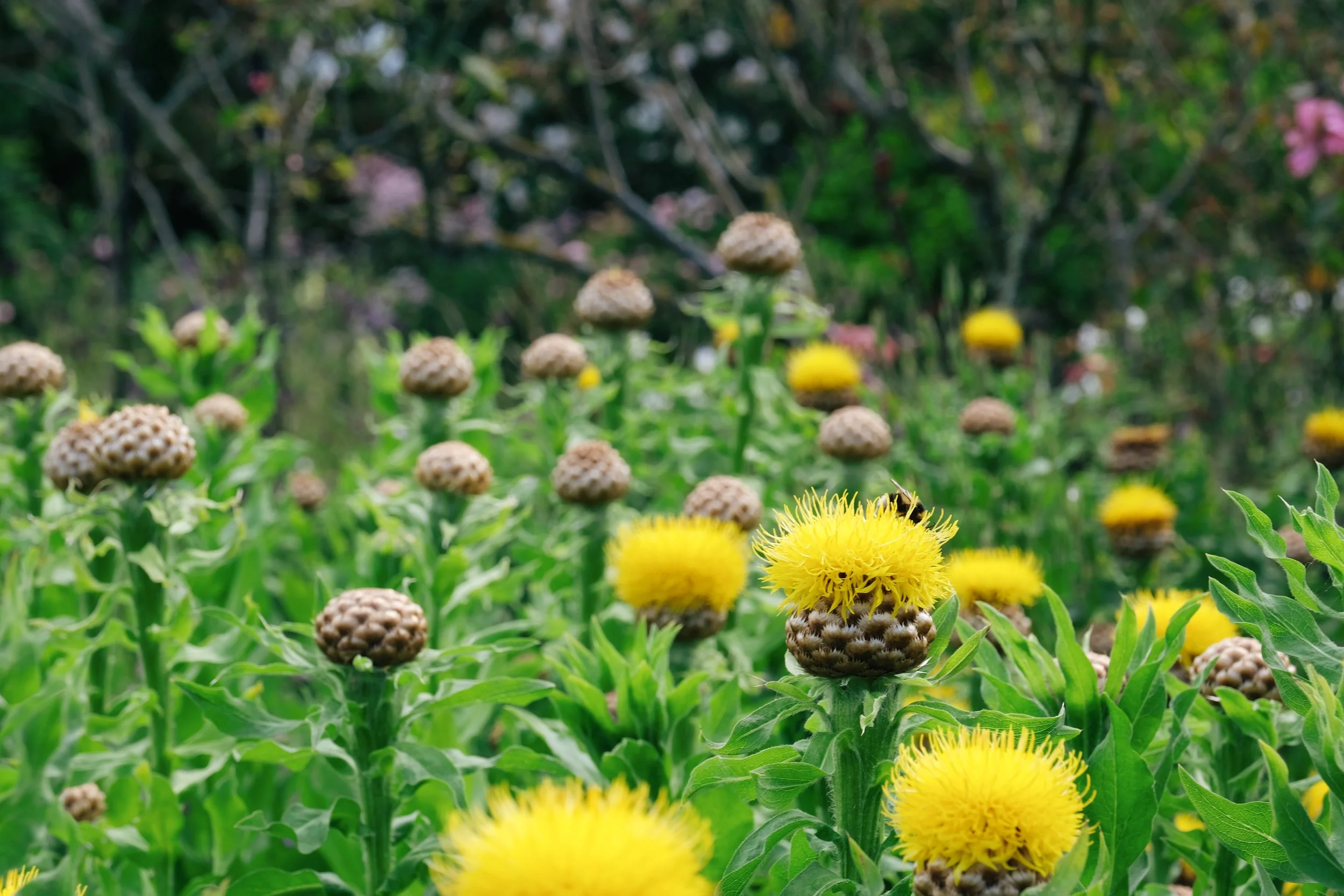Interesting plants on my wishlist!
/It’s at this time of year as my garden crisps up, that I start thinking about what tweaks and additions I might like to make for the next. Ground space is at a bit of a premium in my urban Christchurch garden, particularly in the well-lit spots and I have planted so tightly that I’m not exactly sure where I think any new plants might be comfortably squeezed in. Sacrificial replacements may be made!
This last spring and summer I stumbled across some interesting characters that I’d like to invite over, regardless of whether I have a bed for them or not. I have noticed that my preferences are more often than not heading toward resilient plants with low watering needs and an offering of seed head eye candy well beyond their flowering periods. It seems these preferences come with a level of scarcity and the plants I’m keen on are not always easily available but a quick online search should rustle you up some options to explore.
Eryngium yuccifolium spotted at the FABULOUS heritage rose garden (full of interesting perennials) at the Christchurch Botanic Gardens.
Eryngium yuccifolium – Rattlesnake master
This tall growing eryngium captured me with its strong and bobbly form, towering well above its neighbours at well over 1.2m high. Its thick stems and evergreen sword-shaped leaves (with spiked edges) are a beautiful muted grey-green offset by pale, densely packed flowering heads in that recognisable egg-shaped form common to sea holly. This would be a brilliant plant for a gardener wary of bright colours but looking to get eye-catching form moving through their curation!
A native of eastern and central USA where it predominately thrives in prairie and rocky woodland it prefers all-day sun and will become drought tolerant once established, enjoying a top-up in really dry periods. It is a major attraction for pollinators and its long flowering period from late spring through to early autumn is an absolute plus. Once established it doesn’t enjoy transplanting but by all accounts, it is quite an eager self-seeder so stock shouldn’t be a problem.
This profile refers to Eryngium yuccifolium var. yuccifolium however its cousin Eryngium yuccifolium var. synchaetum will thrive in damper conditions.
Centaurea macrocephala at the FABULOUS heritage rose garden (full of interesting perennials) at the Christchurch Botanic Gardens.
Centaurea macrocephala – Giant knapweed
A very easy-care perennial that grows clumps of crinkly green foliage with its leaves forming up its upright stem reaching around 1m. With just a few flowering stems per plant, they are topped with a single, thistle-like flowerhead that bursts into an incredibly saturated yellow bloom – gratefully feasted on by pollinators through summer. After flowering it forms an attractive cone-like seed head which carries interest through autumn. As a native of Armenia and Turkey, it does find our climate rather delicious and might need some monitoring to stop it from being invasive or escaping garden borders. It is hardy and drought tolerant once established, looking wonderful when allowed to clump together for support in drifts between other plants.
Buplurem fruticosum seen here in the fascinating dry beds of The Blue House, Ambereley.
An example of a mature buplurem at Rototawai in planting designed by Ross Palmer.
Buplurem fruticosum – Shrubby hare’s ear
This is a shrubby perennial with leathery blue-green leaves and slim stems that branch to support a show of domed, umbellifer flowers. They are an interesting, sulphur yellow that you will value through summer and into autumn in the driest well-drained areas of your garden. Excellent for coastal locations thanks to its resistance to salty spray, it is largely disease free and a fantastic tough option for dry gardens. Plants can be pruned back in late winter every few years to keep a thick habit and prevent them from getting rangy.
Phlomis tuberosa at the FABULOUS heritage rose garden (full of interesting perennials) at the Christchurch Botanic Gardens.
Phlomis tuberosa – Tuberous Jerusalem Sage
A cousin of one of my favourite plants Phlomis russeliana, this perennial sports similar balled clusters of flowers up each stem, but these ones are delightfully lavender-pink. Unlike russeliana, its leaves are smooth and rich green, dotted beneath the flowers up its dark burgundy stems which readily branch upward. Flowering from late spring into summer, some varieties will reach well over 1m, and by leaving seedheads on the plant into winter you will be rewarded with graphic shapes within your crispy beds. It is a low-maintenance plant and is drought tolerant once established preferring well-drained but relatively fertile ground or sandy soils. Full sun is best however it will tolerate light shade which is rather appealing to me!
This is an expanded version of the article featured in my Stuff ‘Homed’ gardening column for beginners, The Press, The Post and other regional papers and their subscriber only websites on May 11th 2023.
All words and images are my own, taken in my home and garden in Christchurch, New Zealand unless otherwise captioned.







